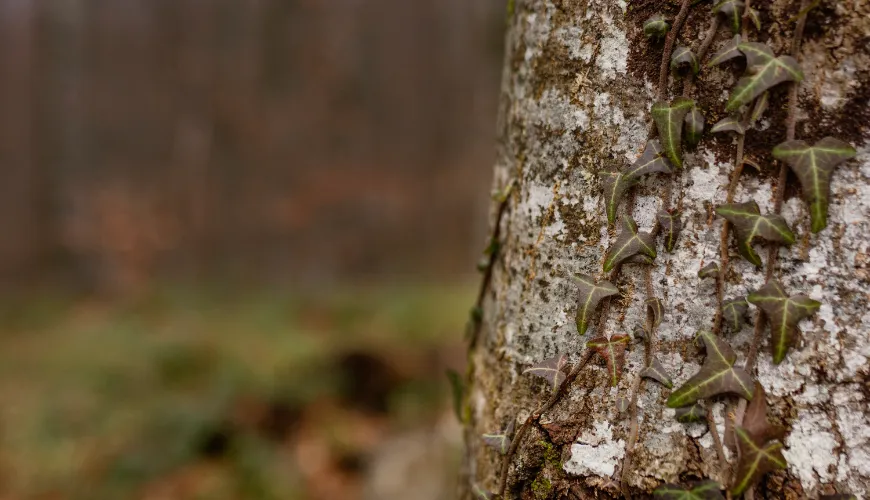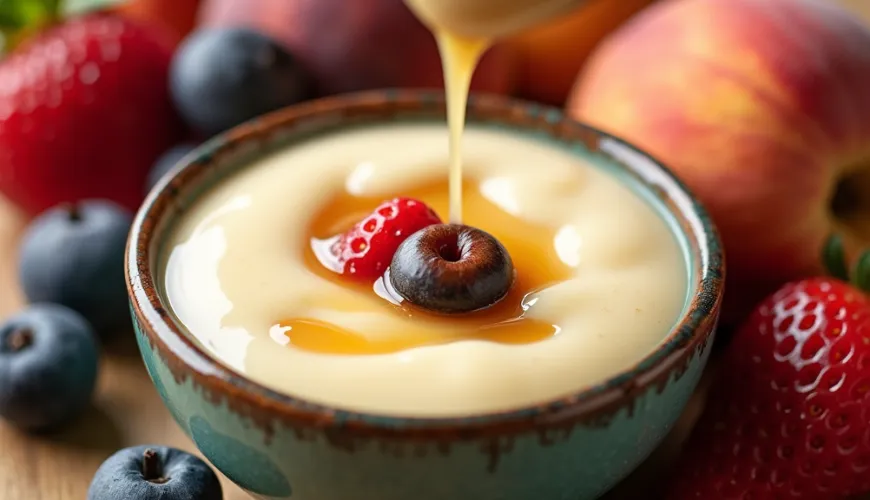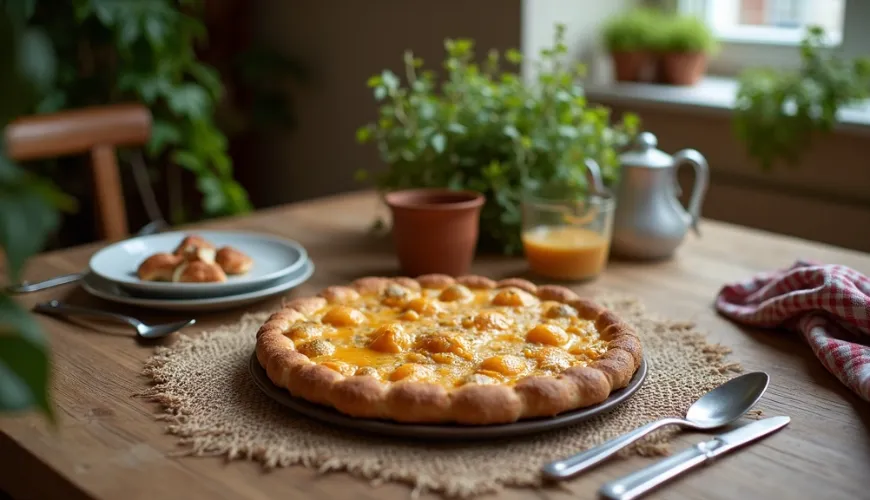
How to Prepare the Perfect Custard Sauce to Adorn Your Desserts

Sweet Nostalgia Named Šodó - How a Sauce with a Story is Born
Some flavors have a special ability to transport a person in time. Just one spoonful and you're suddenly a child again at the dining table where classic school sweet dishes are served. Buchtičky se šodó, freshly taken out of the baking sheet, with a thick vanilla sauce, is one of those dishes that carries a hefty dose of sentiment. But what exactly is šodó? And is it really the cream we know from Czech school cafeterias – or does this term have deeper, perhaps even surprising roots?
What is Šodó – and What is Not?
The word "šodó" sounds French at first, and that's no coincidence. It derives from the French "chaudeau," which means "hot water," but in the culinary world, it hides much more under this name. It is a delicate warm sauce based on egg yolks, sugar, and wine, which, when prepared correctly, is whipped into a fluffy foam. In classic French cuisine, it serves as an accompaniment to desserts, such as cakes or fruit. However, in the Czech interpretation, šodó has taken on a completely different form.
While originally it was an alcoholic sauce ideally with white wine or sparkling wine, in our country, šodó has become synonymous with vanilla pudding cream, often thickened with starch and without alcohol. Today, there is a dual understanding of this term among people: the "real šodó" with wine and yolks, and its homemade, school variant, which evokes childhood memories for many.
Buchtičky se šodó
It is difficult to determine exactly when buchtičky se šodó became a hit in Czech cafeterias, but they peaked in the second half of the 20th century. Small leavened buns were baked until golden and served drizzled with hot sweet sauce. Children loved them precisely for that combination – soft pastry with fluffy, vanilla sauce that resembled a gentle caress.
Interestingly, even though the sauce was commonly prepared without wine and often without yolks in cafeterias, it was still called šodó. This shift in meaning is a beautiful example of how food can culturally transform and root itself in collective memory. From a French dessert, it became a Czech sweet treasure.
Real Šodó versus Homemade Recipe
When we talk about real šodó, we mean the traditional recipe where yolks with sugar and wine are whipped into foam in a water bath. This variant is light, airy, and delicately aromatic – ideal for fruit desserts or sponge cakes. However, it contains raw eggs and alcohol, making it unsuitable for small children.
On the other hand, the homemade šodó recipe, as we know it from family kitchens, is mostly based on milk, vanilla sugar, and thickening with starch or flour. So, it is more of a vanilla sauce, although it still bears the name "šodó". This variant is safer, simpler to prepare, and closer in taste to what Czech diners know and love.
For illustration: Mrs. Jana from Olomouc, a grandmother of four grandchildren, swears by her mother's recipe. "I don't make it with wine. Milk, yolk, a little butter, vanilla, and flour for thickening. Everyone loves it. And when I pour it over fresh buns, the plates are empty in no time."
How to Prepare Homemade Šodó that Tastes Like Childhood
Homemade šodó has several variants, but the foundation is quality milk and real vanilla or vanilla sugar. If you want to venture into making this sauce, there is a simple procedure that anyone can handle.
Basic Recipe for Homemade Šodó Sauce:
- 500 ml of whole milk
- 2 yolks
- 2–3 tablespoons of granulated sugar (to taste)
- 1 teaspoon of vanilla extract or vanilla sugar
- 1 tablespoon of plain flour or starch (e.g., cornstarch)
- 1 small piece of butter for softening
Heat the milk in a pot with vanilla. In a bowl, mix yolks, sugar, and flour with a tablespoon of cold milk until smooth. Pour this mixture into the hot milk and cook briefly while stirring constantly until the sauce thickens. Finally, stir in the butter and serve immediately.
For an authentic experience, it is recommended to serve the sauce with freshly baked buns – small leavened pieces with a golden crust and soft, fluffy interior.
When to Opt for Real Šodó with Wine?
If you want to impress guests with something more unusual, real šodó with wine is an excellent choice. It goes great with fruit, pancakes, or as an accompaniment to sweet casseroles. Although its preparation may seem more complex, a little practice will reward you with a gentle, elegant taste.
The traditional recipe contains yolks, sugar, and white wine, ideally a quality semi-dry one. Everything is whipped into foam in a water bath and served immediately. It is a dish with style – just like its history.
Healthier Variant? Šodó Can Be Sustainable Too
In times when more and more people are interested in a healthy lifestyle and sustainable ingredients, an alternative approach might come in handy. Milk can easily be replaced with plant-based alternatives – almond, oat, or soy. Sweetening can be adapted using maple syrup or coconut sugar. And if eggs are omitted, a gentle vegan vanilla sauce is created, reminiscent of šodó, but suitable for people with allergies or vegans.
Fermented oat milk additionally offers a creamy texture and pleasant light acidity that pairs well with sweet desserts. And what's more – by using organic ingredients and locally grown produce, šodó aligns with modern demands for a sustainable kitchen.
Why Not Forget About Šodó?
Czech cuisine has many treasures, but šodó is among those that deserve not only to be preserved but also rediscovered. Whether as a reminder of childhood days or as a gourmet finishing touch to a festive lunch, it still has its place on our table today.
Moreover, it proves that even a dish with such simple ingredients can be full of flavor, history, and emotions. As the French chef Auguste Escoffier said: "Perfection is hidden in simplicity." And it is in this spirit that šodó is – humble but unforgettable.

